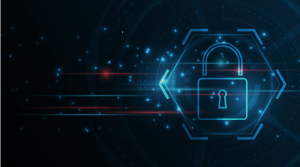The Cyber Security
- Introduction to Cyber Security
- Importance of cyber security
- Definition and scope
- Types of Cyber Threats
- Malware
- Phishing
- Ransomware
- DDoS attacks
- Common Cyber Security Practices
- Use of strong passwords
- Regular software updates
- Two-factor authentication
- Data encryption
- Cyber Security Measures for Individuals
- Awareness training
- Secure browsing habits
- Backup and recovery plans

- Cyber Security Measures for Organizations
- Network security protocols
- Employee training and policies
- Incident response plans
- Emerging Trends in Cyber Security
- Artificial intelligence and machine learning
- Internet of Things (IoT) security
- Blockchain technology
- Challenges in Cyber Security
- Evolving threat landscape
- Skill shortages
- Compliance and regulation
- Future of Cyber Security
- Predictive analytics
- Enhanced authentication methods
- Collaboration and information sharing
- Conclusion
- Recap of key points
- Importance of proactive cyber security measures
Cyber Security
Cyber security has become a critical concern in our increasingly digital world. As technology advances, so do the threats posed by cybercriminals. In this article, we’ll delve into the world of cyber security, exploring its importance, common threats, best practices for individuals and organizations, emerging trends, challenges, and the future landscape.
Introduction to Cyber Security
In today’s interconnected world, where personal, financial, and sensitive information is stored online, the importance of cyber security cannot be overstated. Cyber security encompasses the practices, technologies, and processes designed to protect digital systems, networks, and data from unauthorized access, cyber attacks, and data breaches.
Types of Cyber Threats
Malware
Malware, short for malicious software, refers to any software designed to cause harm to a computer, server, or network. Common types of malware include viruses, worms, Trojans, and spyware.
Phishing
Phishing is a type of cyber attack where attackers impersonate legitimate entities to trick individuals into providing sensitive information such as usernames, passwords, and financial details.
Ransomware
Ransomware is a form of malware that encrypts a victim’s files or locks their computer, demanding payment (usually in cryptocurrency) for the release of the files or restoration of access.
DDoS Attacks
A Distributed Denial of Service (DDoS) attack is aimed at disrupting the normal traffic of a targeted server, service, or network by overwhelming it with a flood of internet traffic from multiple sources.
Common Cyber Security Practices
Implementing certain practices can significantly enhance cyber security posture:
- Use of Strong Passwords: Use complex passwords and consider using password managers to securely store them.
- Regular Software Updates: Keep operating systems, software, and applications up to date to patch vulnerabilities.
- Two-Factor Authentication (2FA): Enable 2FA wherever possible to add an extra layer of security to your accounts.
- Data Encryption: Encrypt sensitive data both at rest and in transit to prevent unauthorized access.
Cyber Security Measures for Individuals
Individuals can take proactive steps to protect themselves online:
- Awareness Training: Stay informed about common cyber threats and how to recognize them.
- Secure Browsing Habits: Avoid clicking on suspicious links or downloading attachments from unknown sources.
- Backup and Recovery Plans: Regularly back up important data and have a plan in place to recover from a potential cyber attack.
Cyber Security Measures for Organizations
Organizations must prioritize cyber security to safeguard their assets and reputation:
- Network Security Protocols: Implement firewalls, intrusion detection systems, and other network security measures.
- Employee Training and Policies: Educate employees about cyber security best practices and enforce security policies.
- Incident Response Plans: Develop and regularly test incident response plans to effectively respond to cyber security incidents.
Emerging Trends in Cyber Security
Artificial Intelligence and Machine Learning
AI and machine learning are being increasingly utilized in cyber security for threat detection, anomaly detection, and automated response to cyber attacks.
Internet of Things (IoT) Security
With the proliferation of IoT devices, securing connected devices and networks against cyber threats has become a priority for organizations and individuals alike.
Blockchain Technology
Blockchain technology offers opportunities for enhancing cyber security through decentralized and tamper-resistant record-keeping.
Challenges in Cyber Security
Despite advancements in technology, cyber security faces several challenges:
- Evolving Threat Landscape: Cyber threats continue to evolve, making it challenging to stay ahead of attackers.
- Skill Shortages: There is a shortage of skilled cyber security professionals, leading to gaps in defense capabilities.
- Compliance and Regulation: Compliance with regulatory requirements and standards adds complexity to cyber security efforts.
Future of Cyber Security
Looking ahead, several trends are shaping the future of cyber security:
- Predictive Analytics: Predictive analytics will play a crucial role in anticipating and mitigating cyber threats before they occur.
- Enhanced Authentication Methods: Biometric authentication and behavioral analytics will complement traditional authentication methods.
- Collaboration and Information Sharing: Increased collaboration among organizations and information sharing will strengthen cyber security defenses.
Conclusion
In conclusion, cyber security is an essential aspect of our digital lives, protecting individuals, businesses, and critical infrastructure from cyber threats. By adopting best practices, staying informed about emerging trends, and collaborating with others, we can collectively enhance our cyber security posture and mitigate risks effectively.
Unique FAQs
- What should I do if I fall victim to a cyber attack?
- If you believe you’ve been targeted by a cyber attack, disconnect from the internet, alert your IT department or a trusted cyber security professional, and follow any incident response plans in place.
- Is it safe to use public Wi-Fi networks?
- Public Wi-Fi networks can pose security risks, as they are often unsecured. Avoid accessing sensitive information or logging into accounts with sensitive credentials while using public Wi-Fi.
- How can small businesses improve their cyber security posture?
- Small businesses can enhance their cyber security by implementing basic security measures such as using strong passwords, enabling two-factor authentication, and regularly updating software and systems.
- What role does employee training play in cyber security?
- Employee training is crucial in raising awareness about common cyber threats, teaching best practices for secure behavior online, and ensuring employees know how to respond to potential security incidents.
- What are some signs that my device may be infected with malware?
- Signs of a malware infection include slow performance, unexpected pop-up windows, unexplained changes to settings or files, and unusual network activity.




